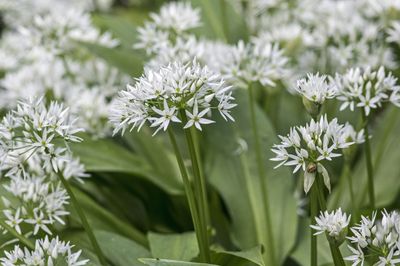Are Alliums Invasive?
Not all allium varieties are well-behaved. Some become weeds that are nearly impossible to get rid of, especially in mild climates. The bad news is that dormant bulbs can remain in the soil for up to six years. The biggest offenders are wild allium (Allium ursinum), wild garlic (Allium vineale), and three-cornered leek (Allium triquetrum). All three spread like wildfire, quickly choking out gentler plants that you try to establish in your garden. There’s really no easy answer when it comes to controlling allium plants. Be patient and persistent, as it will probably require several go-rounds. Oregon State University says to expect the process to take a minimum of three or four years, and maybe even more.
Controlling Allium Plants in the Garden
If you need more information on how to manage flowering onions, here are a few tips: Pulling: Pulling may help, but only if you can manage to get all the bulbs. The problem with pulling is that tiny bulbs often break off when you pull the clump, and it’s very difficult to get them all, especially if your soil is hard and compacted. Try pulling after a rainfall or watering the area deeply a day or two ahead of time, but be aware that pulling may not be the final solution. Digging: It isn’t much fun, but digging the old-fashioned way is probably your best bet when it comes to getting rid of invasive ornamental alliums in the garden. Dig a deep, wide area around the clump to get the tiny bulbs. Repeat the process every two weeks throughout the season. Don’t shake the dirt off the clump; just place the entire plant into a box or bag so stray bulbs don’t escape. Discard the clumps, soil and all. By all means, don’t put the clump in your compost heap. Mowing: Mowing doesn’t get rid of the underground bulbs, but cutting off the tops prevents blooms from developing seeds that generate even more plants. Herbicides: Chemicals are generally ineffective because the substance doesn’t stick to the tall, slender, somewhat waxy leaves and does little to combat the underground bulbs. However, if you want to give it a try, use a product containing 2-4 d, glysophate or dicamba before the plants reach 8 inches (20.5 cm.) tall. Mow immediately before treating the allium because newly mowed leaves have rough edges that improve absorption.
Controlling Allium in Lawns
If allium plants are popping up on your lawn, be sure to water and fertilize regularly. A healthy stand of grass is more likely to choke out the invaders.
